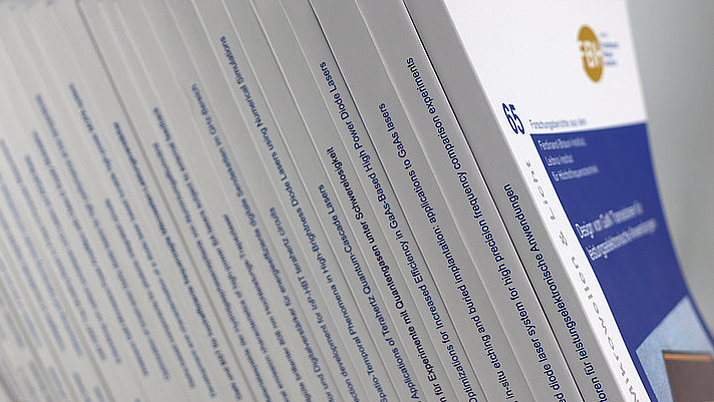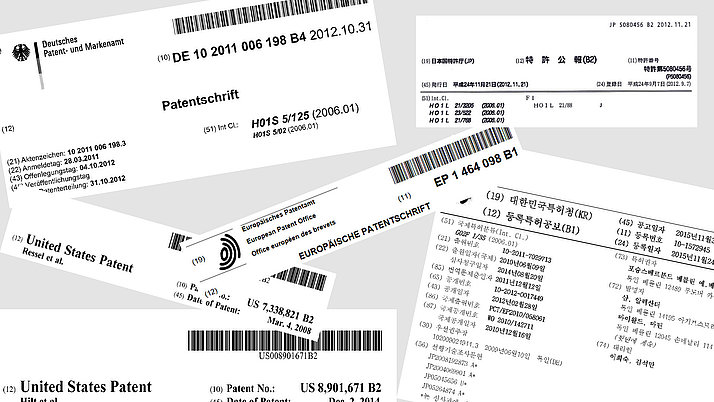Towards an EPR on a Chip Spectrometer for Monitoring Radiation Damage During X‑ray Absorption Spectroscopy
E. Shabratova1,5, H. Lotfi2, A. Sakr2, M.A. Hassan2, M. Kern2, M. Neeb4, R. Grüneberger4, B. Klemke4, G. Marcozzi1,3, K. Kiefer4, A. Tsarapkin5, K. Höflich5, A. Dittwald6, A. Denker6, J. Anders2, J.E. McPeak1,7, K. Lips1,3
Published in:
Appl. Magn. Reson., vol. 56, no. 1-2: Special Issue: Celebration of 80 Years of EPR Part II, pp. 103-123, doi:10.1007/s00723-024-01702-7 (2025).
Abstract:
Electron paramagnetic resonance (EPR) spectroscopy is an essential tool to investigate the effects of ionizing radiation, which is routinely administered for reducing contaminations and waste in food products and cosmetics as well as for sterilization in industry and medicine. In materials research, EPR methods are not only employed as a spectroscopic method of structural investigations, but also have been employed for detection of changes in electronic structure due to radiation damage from high energy X-rays, for example, to monitor radical formation inside biomolecules caused by X-ray irradiation at carbon, nitrogen, and oxygen K-edges at synchrotron facilities. Here a compact EPR spectrometer, based on EPR-on-a-chip (EPRoC) sensor and a portable electromagnet, has been developed as a solution for monitoring radiation damage of samples during their investigation by X-ray absorption spectroscopy (XAS) at synchrotron facilities. A portable electromagnet with a soft iron core and forced air temperature stabilization was constructed as the source of the external magnetic field. The sweep range of magnetic field inside the most homogeneous region of the portable electromagnet is 12–290 mT. The compact spectrometer performance was evaluated by placing the EPRoC sensor inside either a commercial electromagnet or the portable electromagnet to record the EPR spectrum of tempol, irradiated alanine, and dilithium phthalocyanine (Li2Pc). The potential performance of the portable spectrometer for the detection of radiation damage in organic compounds and transition metal-containing catalysts during XAS measurements in both fluorescence and transmission modes was calculated with promising implications for measurements after implementation in a synchrotron-based XAS spectrometer.
1 Berlin Joint EPR Laboratory and EPR4Energy, Department of Spins in Energy Conversion and Quantum Information Science (ASPIN), Helmholtz-Zentrum Berlin für Materialien und Energie GmbH (HZB), Berlin, Germany
2 Institut für Intelligente Sensorik und Theoretische Elektrotechnik, Universität Stuttgart, Stuttgart, Germany
3 Berlin Joint EPR Laboratory, Fachbereich Physik, Freie Universität Berlin, Berlin, Germany
4 Department Sample Environment, Helmholtz-Zentrum Berlin für Materialien und Energie GmbH (HZB), Berlin, Germany
5 Ferdinand-Braun-Institut, Leibniz-Institut für Höchstfrequenztechnik (FBH), Berlin, Germany
6 Department Protons for Therapy, Helmholtz-Zentrum Berlin für Materialien und Energie GmbH (HZB), Berlin, Germany
7 Department of Chemistry, Novo Nordisk Foundation Pulse EPR Center, University of Copenhagen, Copenhagen, Denmark
© The Author(s) 2024
Open Access This article is licensed under a Creative Commons Attribution 4.0 International License, which permits use, sharing, adaptation, distribution and reproduction in any medium or format, as long as you give appropriate credit to the original author(s) and the source, provide a link to the Creative Commons licence, and indicate if changes were made. The images or other third party material in this article are included in the article’s Creative Commons licence, unless indicated otherwise in a credit line to the material. If material is not included in the article’s Creative Commons licence and your intended use is not permitted by statutory regulation or exceeds the permitted use, you will need to obtain permission directly from the copyright holder. To view a copy of this licence, visit http://creativecommons.org/licenses/by/4.0/.
Rightslink® by Copyright Clearance Center
Full version in pdf-format.


